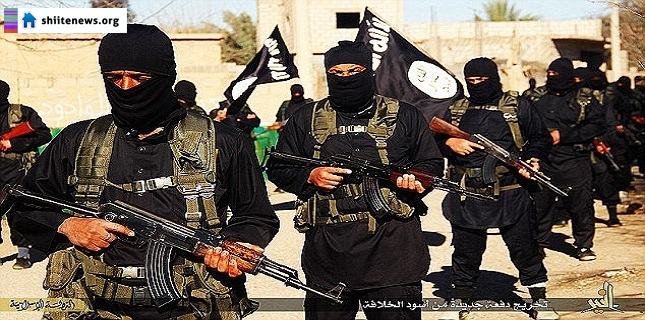Russian Military Operations in Syria
ISIS soldiers Photo Credit: shiitenews.org
Just two days ago I published the post Russia Inside Syria, concerning how Russia appeared to be preparing for air warfare against ISIS by building a new air base at the Mediterranean coast city of Latakia, Syria. This morning I was reading up on current events while half-listening to Fox News, when suddenly I heard news about Russian troops and armor pouring through the old Russian naval resupply base of Tartus. With my curiosity aroused, I paid more attention for further announcements. Later I heard that the Russians had made this move as part of an agreement with their ally Iran and that the troop arrivals so far amounted to about a brigade of infantry. I heard no further verification that armor had also arrived. Even later, I saw President Obama give an announcement from Ft. Meade, Maryland that the U.S. would try to dissuade Russia from continuing their adventure. Gosh, I wonder how seriously the Russians will take him?
Searching through the internet for added indications, I found an AP release published by Yahoo News about Israel’s knowledge of these affairs. The leading lines of the release, dated September 10, were as follows.
Russia has been sending military forces into Syria in recent days, Israel’s defense chief announced Thursday, as Moscow hinted at broader action to bolster President Bashar Assad’s embattled army following a string of battlefield losses.
These actions seem to show Russian and Iranian anxiety that the Syrian regime is on the verge of being completely defeated by ISIS. If the Russians are truly serious about defeating ISIS, and there is absolutely no reason to believe they are not, then their technological superiority within the combined arms team of air with infantry should make them more than capable of doing the job.
Nevertheless, the task before the Russians is very formidable. Earlier this week the province of Idlib, nearby to both Tartus and Latakia, fell to ISIS. If the Russians had delayed their deployment by as much as a week, all of northwest Syria and Syria’s coast on the Mediterranean might have been lost. The numbers of ISIS soldiers have been estimated to be as high as 200,000 by Fuad Hussein, chief of staff of Kurdish President Massed Bargain. This is considerably higher than the CIA estimate of between 20,000 and 31,500, which must be considered suspect given reports U.S. intelligence has watered down strength estimates of ISIS to fit Obama’s narrative that ISIS is not a big threat to the U.S. By contrast, the total Russian Army personnel number about 756,055 with an active reserve force of 2,485,000.

Image Credit: Google Maps/Nations Online Project
One Russian problem is that Putin is eyeing both the Ukraine and the Baltic states, while salivating at the prospect of a weak Western Europe not being able to protect the former East European possessions of the Soviet Union. Therefore, if he continues to harbor ambitions in Europe, he will have to devote significant military assets to facing NATO. Also, Russia is currently in deep economic trouble, due to economic sanctions because of his European adventures, and also due to their dependence on exporting oil during a time oil prices are crashing. How much Putin can afford to devote military and economic assets in fighting ISIS is debatable. If he is truly committed to destroying ISIS, one would think that to overcome 200,000 ISIS soldiers, he would have to commit at least 100,000 Russian soldiers and probably more. The Russians would have to depend on their technological superiority in firepower, mobility, communications, and logistics to overcome ISIS’ numerical advantage.
If the Russians and Iranians are successful in destroying ISIS in Syria, there is no reason they could not complete the job in Iraq. Shiite Iraq has seemed more and more a client state of Iran, and Russia and Iran would be offering a very effective air and ground combined arms team. By comparison the weak pinpricks on ISIS solely by air provided by the U.S. seems much less attractive. As a result of Obama’s totally failed foreign policy, we may be looking prospectively at a Middle East dominated by Russia and Iran.
Views: 2,120





























